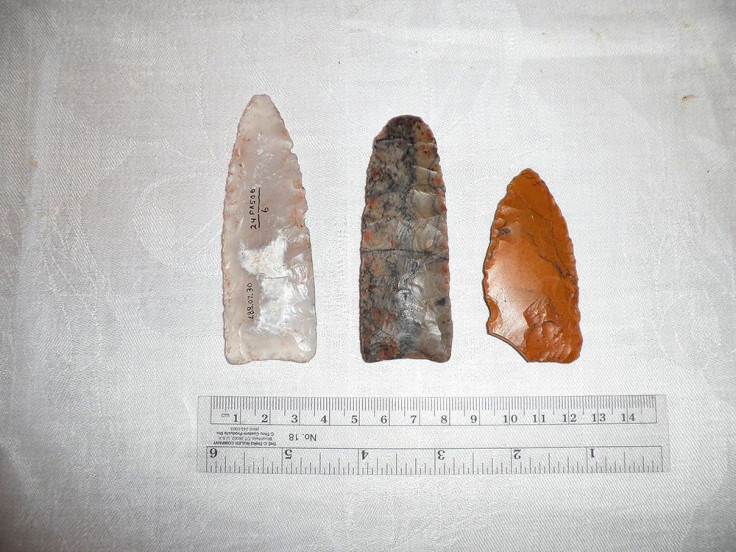Genome Of 12,600-Year-Old Clovis Boy May Be ‘Missing Link’ In Native American Ancestry [PHOTOS]

While there are few answers concerning the remains of a 12,600-year-old toddler found in the American Rockies, analysis of the boy’s genome may shed light on how the first Americans came to the New World.
The remains of the 1-year-old boy underwent a full genome sequence, which revealed, as expected, that the first human settlers in North America came from Asia and not Europe. Not only that, these tribes are the direct ancestors of today’s Native Americans. The findings, published in Nature, add weight to the longstanding theory that the first Americans came to the New World by walking over a land bridge across the Bering Strait from Siberia.
"It's crazy," Eske Willerslev of the University of Copenhagen in Denmark, who led the genomic analysis told New Scientist. "Finding someone who is directly ancestral to the entire population of a continent – that just does not happen. I don't think it would ever happen in Europe, or in Siberia. There are very few places where this could happen."
The skeletal remains, called Anzick-1, were found in 1968 near a rock cliff in central Montana, in an area called Anzick after the family that owned the land. At the time, the 1-year-old boy’s remains were found buried with a cache of sharpened flints and a bone tool that had been passed down for 150 years. The skeleton and burial artifacts were covered with red ochre, a type of mineral used in prehistoric times as a pigment in burials.

Scientists believe the boy belonged to the Clovis culture (named after stone tools found in New Mexico), the first widespread prehistoric people that appeared about 13,000 years ago. The latest findings that link the toddler’s skeletal remains to this prehistoric people may help settle differences between some anthropologists and Native Americans that have argued the first people originated in Europe, casting into doubt their origin stories and artifacts on ancestral lands, Reuters reports.
“We hope that this study leads to more cooperation between Native Americans and scientists. This is just one human genome. We need to know the genetic story of modern Native peoples and derive more genetic data from ancient remains to fully understand the origins and movements of the First Americans and their descendants,” Michael Waters, director of the Center for the Study of First Americans at Texas A&M, said in a statement.
Willerslev and his colleagues extracted DNA from the boy’s bones to sequence his genome. They compared the results with DNA samples from 43 modern non-African populations, including 52 South American, Central American and Canadian tribes. The results showed the boy was most closely and equally related to modern tribes in Central and South America.
Willerslev says the results act as the “missing link” between the first Americans and today’s tribes. The new findings have “settled the long-standing debate about the origins of the Clovis," according to Willerslev. "We can say the Solutrean theory suggesting Clovis originated from people in Europe doesn't fit our results."
Experts remain divided on just how the first Americans arrived and how large of a group first settled in the New World.
"The most likely scenario is that a single migration of people into the heartland of North America around 15,000 years ago gave rise to the Clovis and their descendants, which includes modern Native Americans," Waters said.
As for the remains, they will be reburied in the late spring or early summer. "We're excited and honored to work with the tribes and plan a reburial ceremony to lay this child to rest with the respect such an important part of human history deserves," co-author Sarah Anzick at Rocky Mountain Laboratories in Hamilton, Mont., told Live Science.
© Copyright IBTimes 2024. All rights reserved.






















